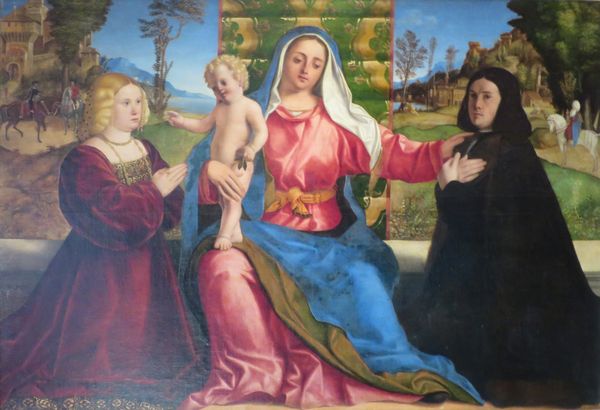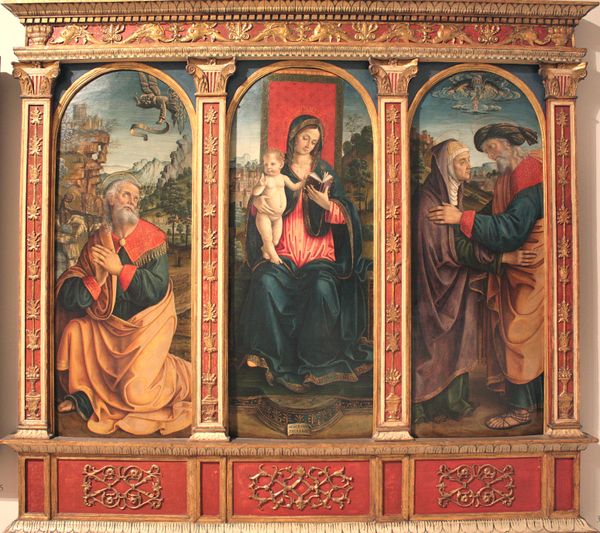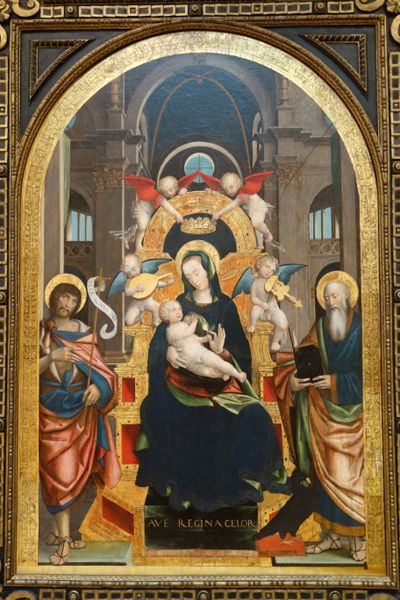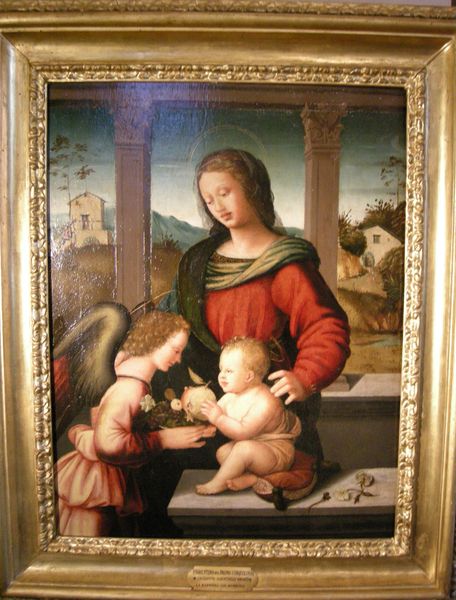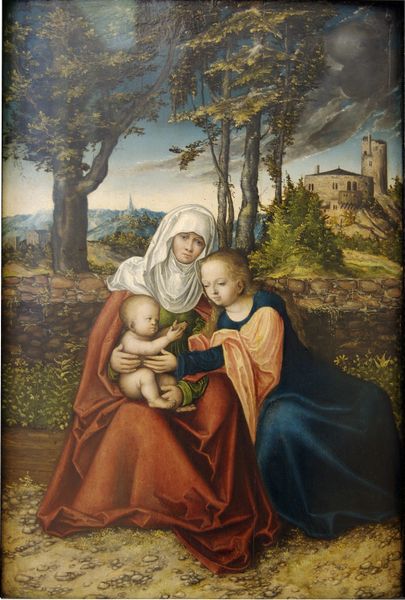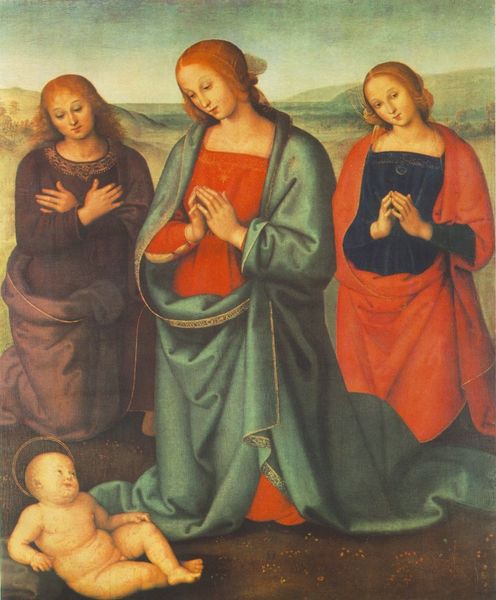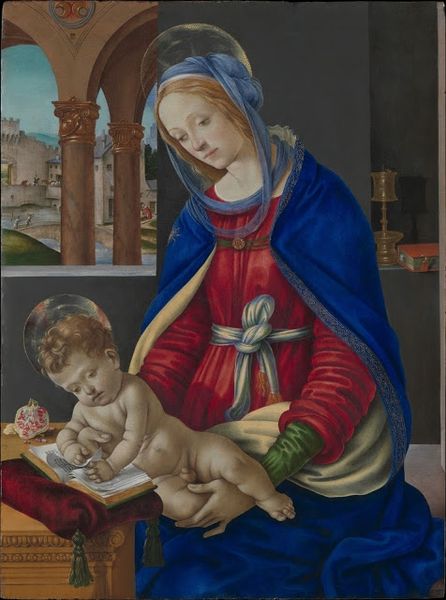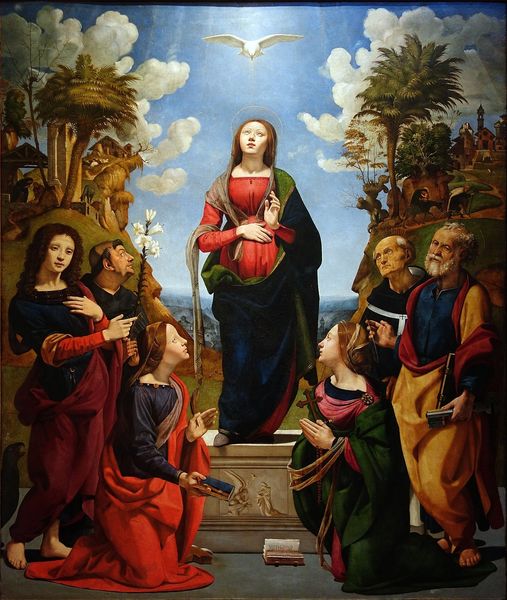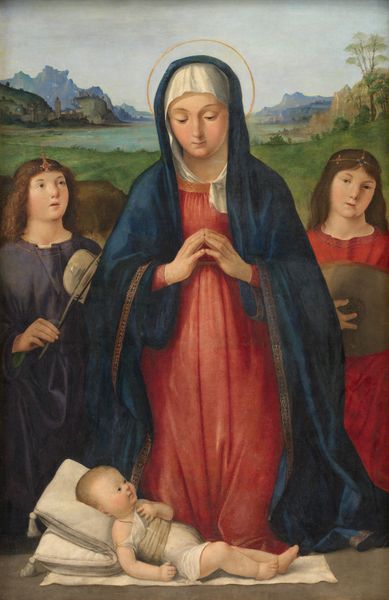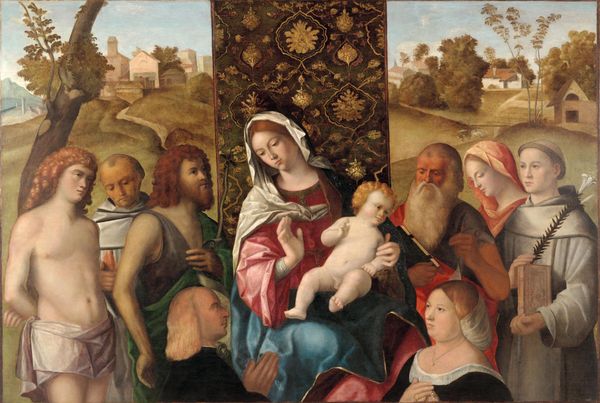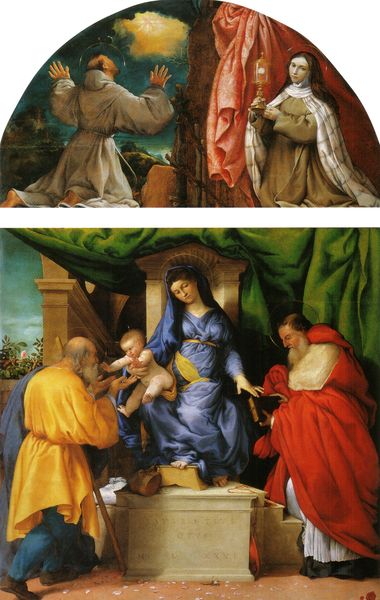
Mariotto Albertinelli E Franciabigio, Madonna Col Bambino Tra I Santi Girolamo E Zanobi 1506
0:00
0:00
painting, oil-paint
#
painting
#
oil-paint
#
oil painting
#
history-painting
#
italian-renaissance
#
early-renaissance
#
portrait art
Copyright: Public domain
Editor: Here we have Mariotto Albertinelli and Franciabigio's "Madonna Col Bambino Tra I Santi Girolamo E Zanobi," created around 1506 using oil paint. I'm struck by the contrasting textures, the smooth drapery against the more roughly rendered landscape. What do you make of the materials and techniques used here? Curator: Well, consider the socioeconomic context. Oil paint, by this point, was becoming increasingly accessible. It allowed for a smoother finish, highly prized by patrons eager to display their wealth and refined taste. The application reveals the artists’ understanding of light and shadow – a market skill that catered to specific buyers interested in humanist ideals. How do the chosen materials and the skilled labor involved reinforce power structures within Renaissance society? Editor: That’s interesting. So, it's not just about aesthetics, but also about access and power? Curator: Precisely. Look at the lapis lazuli used in the Virgin's robe. It’s not simply a colour; it’s a declaration. Think about the labour involved in procuring and grinding the pigment. The use of such costly materials underlines the commissioning patron’s status and control over resources. Where do the means of artistic production intersect with patronage and economic status in early Renaissance Florence? Editor: So the painting becomes a product reflecting a particular socio-economic system. The landscape setting feels a little secondary then? Curator: Not at all. It serves to elevate the central figures while acting as a backdrop constructed, planned, and delivered with precise resource management, supporting and enhancing the painting’s meaning and value. These paintings were, after all, a financial transaction of resources and skills. The saints shown contribute to that value by symbolizing important concepts for a certain social strata. Editor: I hadn't considered it in terms of such direct economic implications. It sheds new light on the creative decisions involved. Curator: Yes, understanding the means of production brings the art, patronage, and social fabric together to produce meaning, beyond surface appearances.
Comments
No comments
Be the first to comment and join the conversation on the ultimate creative platform.
